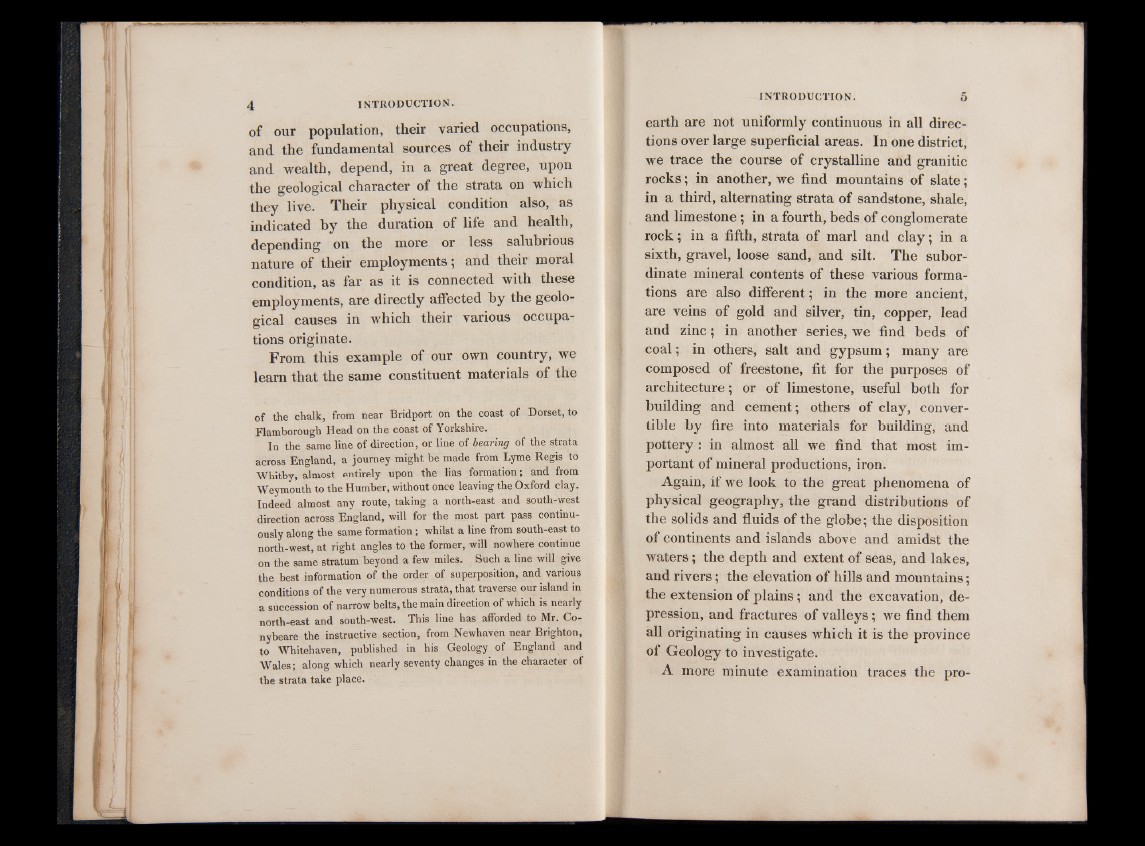
of our population, their varied occupations,
and the fundamental sources of their industry
and wealth, depend, in a great degree, upon
the geological character of the strata on which
they live. Their physical condition also, as
indicated by the duration of life and health,
depending on the more or less salubrious
nature of their employments ; and their moral
condition, as far as it is connected with these
employments, are directly affected by the geological
causes in which their various occupations
originate.
From this example of our own country, we
learn that the same constituent materials of the
of the chalk, from near Bridport on the coast of Dorset, to
Flamborough Head on the coast of Yorkshire.
In the same line of direction, or line of bearing of the strata
across England, a journey might be made from Lyme Regis to
Whitby, almost entirely upon the lias formation; and from
Weymouth to the Humber, without once leaving the Oxford clay.
Indeed almost any route, taking a north-east and south-west
direction across England, will for the most part pass continuously
along the same formation; whilst a line from south-east to
north-west, at right angles to the former, will nowhere continue
on the same stratum beyond a few miles. Such a line will give
the best information of the order of superposition, and various
conditions of the very numerous strata, that traverse our island in
a succession of narrow belts, the main direction of which is nearly
north-east and south-west. This line has afforded to Mr. Co-
nybeare the instructive section, from Newhaven near Brighton,
to Whitehaven, published in his Geology of England and
Wales; along which nearly seventy changes in the character of
the strata take place.
earth are not uniformly continuous in all directions
over large superficial areas. In one district,
we trace the course of crystalline and granitic
rocks ; in another, we find mountains of slate ;
in a third, alternating strata of sandstone, shale,
and limestone ; in a fourth, beds of conglomerate
rock ; in a fifth, strata of marl and clay ; in a
sixth, gravel, loose sand, and silt. The subordinate
mineral contents of these various formations
are also different ; in the more ancient,
are veins of gold and silver, tin, copper, lead
and zinc ; in another series, we find beds of
coal ; in others, salt and gypsum ; many are
composed of freestone, fit for the purposes of
architecture ; or of limestone, useful both for
building and cement; others of clay, convertible
by fire into materials for building, and
pottery : in almost all we find that most important
of mineral productions, iron.
Again, if we look to the great phenomena of
physical geography, the grand distributions of
the solids and fluids of the globe ; the disposition
of continents and islands above and amidst the
waters ; the depth and extent of seas, and lakes,
and rivers ; the elevation of hills and mountains ;
the extension of plains ; and the excavation, depression,
and fractures of valleys ; we find them
all originating in causes which it is the province
of Geology to investigate.
A more minute examination traces the pro